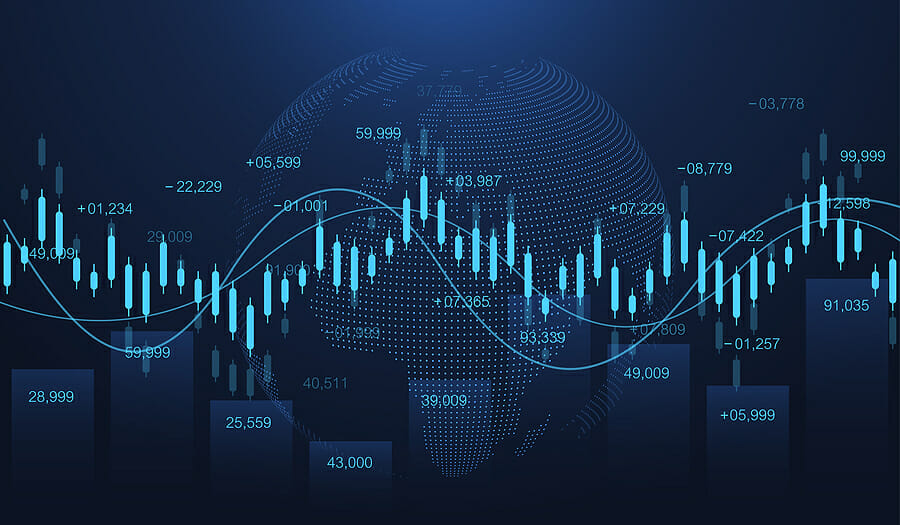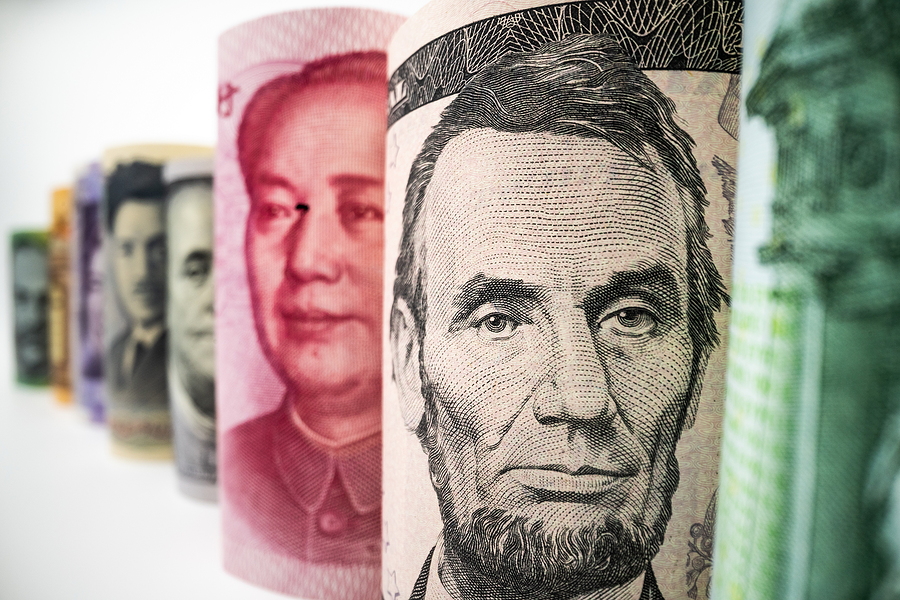If you’ve decided to trade forex in the digital age, you’re in excellent company.
In fact, the number of retail traders in the UK increased by 23% in the year ending May 2021, with some 34,000 trading currencies for the very first time.
This trend certainly accelerated during the coronavirus pandemic, while it has also seen global daily trading volumes rise from $5.1 trillion in 2016 to more than $6.6 trillion.
But what is forex, and how do you trade this market? Here’s a brief, but hopefully insightful, guide.
What is Forex?
The forex market (or foreign exchange) is the international marketplace for trading international currencies.
There are approximately 170 currencies available through this marketplace, with these traded speculatively and in major, minor and exotic pairs.
These pairs provide a price quote of the exchange rate for two different currencies, with the EUR/USD offering a relevant case in point. This is the single most liquid and traded currency pair in the market, while it currently accounts for around 24% of all daily trading volumes in the FX space.
In this instance, the first currency (EUR) is known as the base currency, and this is the asset that you intend to buy or trade. The second currency (USD) is the so-called “quote” or “variable” currency, and will determine how much it will cost in dollars to purchase a single Euro.
The price of the first currency is subsequently reflected in units of the second, while in most cases, free-floating exchange rates will trigger real-time price fluctuations in accordance with factors such as supply and demand, inflation (and similar macroeconomic conditions) and trade inflows between relevant countries.
While the speculative and volatile nature of forex may seem challenging, both of these elements can be considered as advantages.
For example, speculative investment vehicles enable you to trade assets without assuming ownership of the underlying financial instruments, creating flexibility and making it possible to achieve profit regardless of whether prices rise or fall.
Similarly, volatility can be leveraged through short-term trading strategies like scalping, which enables you to earn incremental profits from the high volume of price movements that occur during each trading day.
There are also various factors that can impact on the forex market and currency prices, especially macroeconomic factors such as interest rates and inflation. If you’re wondering what causes inflation, this describes a hike in the price of consumer goods and services which is usually triggered by rising input costs and increased demand.
Other factors include the trade flows and geopolitical relationship between two nations, which have a direct impact on exchange rates and levels of demand from overseas.
The Four Key Trading Strategies
We’ll touch more on scalping below, but this is actually one of four main trading strategies that can be used to achieve a profit in the forex market.
We’ve introduced each one below, while asking what sets them apart from one another and appraising their key benefits.
- Scalping: As we’ve touched on, scalping is a short-term trading strategy that looks to leverage a high volume of FX price movements within a relatively short period of time. Scalping is designed to leverage the market’s innate volatility, as it places a focus on opening a large number of positions that may only be open for a matter of minutes. Certainly, no positions will be maintained overnight, while you’ll look to make small profits from each individual order.
- Day Trading: Day trading is similar to scalping, in that it’s a short-term strategy that requires you to close all positions before the end of the day. However, you’ll execute significantly fewer orders when day trading, with most positions open for a matter of hours. However, you can still trade daily volatility in the FX market through this strategy, although it requires considerably less analysis and research to implement.
- Swing Trading: Swing trading is slightly different, in that it’s designed to capture short to medium-term gains in a particular currency price. Typically, this strategy will require you to trade the currency pair over a period of between a few days or several weeks, while swing traders tend to rely on technical analysis to identify opportunities.
- Position Trading: We’ll close with position trading, which is a popular long-term strategy that enables you to maintain open positions for months or (in some cases) years. While this isn’t as common when trading speculative markets like forex, it’s ideal for risk averse investors who want to eschew short-term price shifts in favour of longer-term outcomes. This strategy relies on more precise fundamental analysis of long-term trends.
Before We Go – How to Trade Forex
Regardless of how you choose to trade forex, there are a number of universal steps that you can follow to optimise your chances of success.
Remember, some 70% of forex traders lose money over time, so you’ll need to rely on incremental measures to minimise your chance of loss and optimise returns. Here are some tips to keep in mind.
- #1. Make Risk Management a Key Focus: Forex trading is a risky endeavour, even in instances where you leverage swing or position trading. Two of the key tools you can use in this respect are stop loss and take profit orders, which automatically close positions once they’ve either incurred a predetermined level of loss or reached a desired profit threshold. This helps to safeguard your capital and manage expectations in a volatile space.
- #2. Use Leverage Carefully: Forex is one of the most leveraged products in the financial market, with even reputable and licensed brokers enabling you to open positions at a ratio of 200:1 (in relation to your margin). While this is attractive and can lead to significant returns on a small cash deposit, it can also lead to similarly disproportionate losses in instances where the market turns against you.
- #3. Use a Demo Account: When you sign up with a forex broker, you’ll have the opportunity to use a so-called “demo account” for a period of between three and six months. This offers you access to a simulated, real-time marketplace in which you can trade using virtual currency, allowing you to gain practical market experience and test your strategies without risking your hard-earned capital.
Image Source: BigStockPhoto.com (Licensed)
Site Disclaimer
The Content in this post and on this site is for informational and entertainment purposes only. You should not construe any such information or other material as legal, tax, investment, financial, or other advice. Nothing contained on our Site constitutes a solicitation, recommendation, endorsement, or offer by HII or any third party service provider to buy or sell any securities or other financial instruments.
Nothing in this post or on this site constitutes professional and/or financial advice. You alone assume the sole responsibility of evaluating the merits and risks associated with the use of any information or other content in this post or on this site.
You recognize that when making investments, an investor may get back less than the amount invested. Information on past performance, where given, is not necessarily a guide to future performance.
Related Categories: Money, Reviews






![Anso FG Reviews: 4 Markets You Can Use to Trade in 2024 [ansofg.com] Anso FG Reviews: 4 Markets You Can Use to Trade in 2024 [ansofg.com]](https://incrediblethings.com/wp-content/uploads/2018/12/bigstock-Stock-Market-Or-Forex-Trading-343914151.jpg)